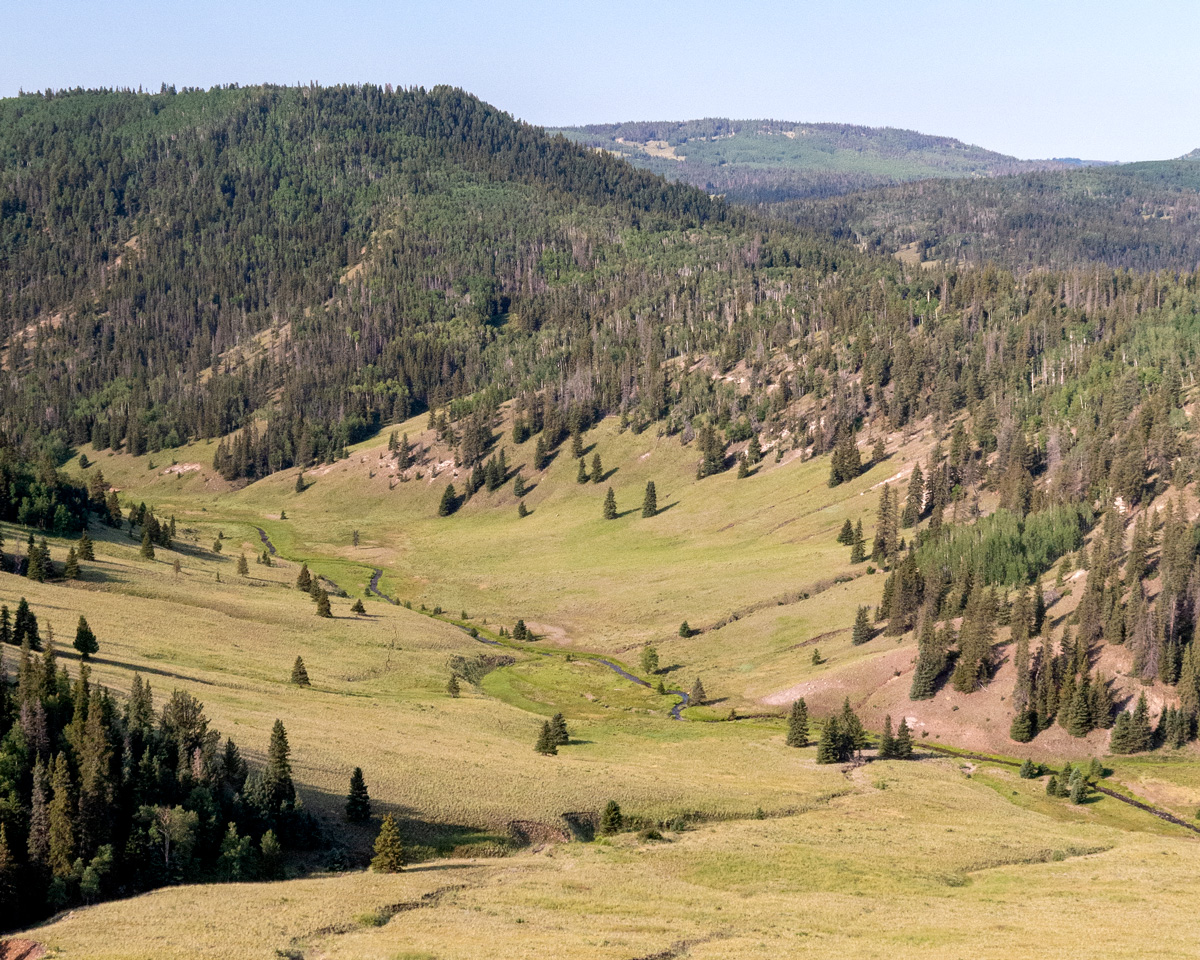In late July, the Carson, Cibola, and Santa Fe National Forests released the final Northern New Mexico Riparian, Aquatic, and Wetland NEPA decision, with the intention of streamlining the National Environmental Policy Act (NEPA) process in cases involving the restoration of riparian, wetland, and other aquatic ecosystems in northern New Mexico.
NEPA is a federal law intended to assess and determine the environmental impact of all actions on our public lands. It’s a necessary but often expensive and time-consuming hurdle for projects ranging from oil wells to trails to grazing. Another example, the recent Rainbow Family gathering in the southern Carson National Forest, created significant forest impact and should have been subject to NEPA requirements (a frustration to organizations familiar with Rainbow events, family leaders have repeatedly found ways of skirting the Act).
Aquatic (stream) projects are also subject to NEPA. Although wetlands or riparian areas make up less than 200,000 acres of the 4.8 million acres of National Forest system lands in northern New Mexico, they provide essential ecological functions far beyond their small foot-print. Riparian zones support the highest plant, bird, insect, reptile-amphibian, and mammal biodiversity in the forests by providing nesting habitat, migration corridors, and refuge from unfavorable conditions. They also enhance human uses like agriculture, fishing, and other types of recreation.
As we all know, riparian, aquatic, and wetland areas have been impacted by significant climate change, wildfire, agriculture and grazing, urbanization, groundwater withdrawals, recreational use and invasive species. Nearly 60% of the subwatersheds across the three forests have been categorized as impaired or atrisk.
The Northern New Mexico Riparian decision opens the door to begin implementing multiple projects to improve this situation. We also know that federal regulations can be pretty boring stuff. Also, burden-some. If you don’t want to bone up on NEPA, just understand that this decision will make it much easier to get through the process on stream and aquatic projects, which in all but the tiniest percent-age of cases, are quite beneficial to the public estate and should therefore be sped towards implementation. Having so many great fishing resources out its back door, Questa should definitely applaud a decision that will benefit regional streams.
This decision comes at the end of a process that began a few years ago, when the Forest Service initially proposed streamlining aquatic restoration since the need for it was rising in the face of climate change. At that time, only a handful of “NEPA-cleared” project sites were ready for work, including Comanche Creek in the Valle Vidal, the Rio San Antonio near Tres Piedras, and others. The small number of viable projects didn’t come close to addressing the sorry state of streams across the three forests. Interestingly, since this proposed action was relevant to public lands, it required its own NEPA analysis. In other words, a proposal to streamline the lengthy NEPA process was subjected to the lengthy NEPA process.
Specialists from the three forests prepared an environmental assessment (EA) that reflected public comments received through 2019 and 2020. The final EA and a draft decision notice were released in December 2020. The final decision notice supports a Finding of No Significant Impact (FONSI) under NEPA and is consistent with all three forests’ current and proposed forest management plans. Projects to improve passage for aquatic species would qualify under this decision, also in-stream and floodplain projects, the planting of riparian vegetation, road and trail erosion control, and the restoration and expansion of seeps and springs. Projects will range from channel reconstruction and streambank restoration to planting riparian species and restoring beaver habitat. As the climate continues to change, we’ll need to acknowledge the importance of healthy aquatic habitats to not only wildlife, but to communities like Questa with recreation-dependent economies. Beavers, for example, not only create needed water storage in times of need but create buffers against the effects of wildfire.
At a time when northern New Mexico remains just one horrible winter away from lighting up like California, the removal of roadblocks to restoration projects is a gift from the heavens. I just got back from California, and it didn’t look good.




